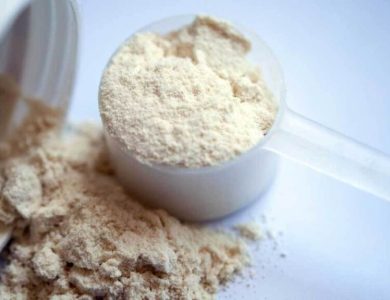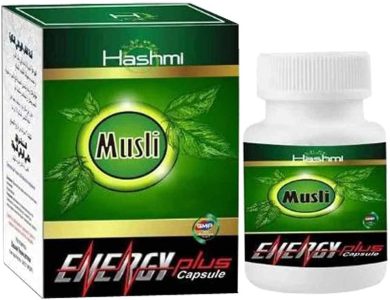In the realm of skincare superheroes, one ingredient has emerged as a dual-action powerhouse azelaic acid. Known for its versatility, this compound has gained popularity for addressing not one, but two common skin concerns: acne and rosacea. In this comprehensive guide, we will explore the benefits, mechanisms, and application of azelaic acid, showcasing its effectiveness as a dual-action hero in the quest for clear and radiant skin.
Understanding Azelaic Acid:
In skincare formulations, it is typically synthetically produced. This multitasking ingredient has been proven to offer a range of benefits for various skin concerns, making it a go-to choice for those dealing with both acne and rosacea.
Benefits:
1. Acne Treatment:
It is renowned for its effectiveness in treating acne. It works by inhibiting the growth of acne-causing bacteria, particularly Propionibacterium acnes. Additionally, It helps to normalize the shedding of skin cells inside hair follicles, preventing the formation of comedones (clogged pores).
2. Anti-Inflammatory Properties:
Inflammation is a common factor in both acne and rosacea. Azelaic acid exhibits potent anti-inflammatory effects, helping to reduce redness and swelling associated with these skin conditions. By calming inflammation, it contributes to an overall improvement in skin tone and texture.
3. Hyperpigmentation Treatment:
It has been shown to inhibit the production of melanin, making it effective in treating hyperpigmentation concerns. Whether you’re dealing with post-inflammatory hyperpigmentation from acne or the redness associated with rosacea, azelaic acid can help even out skin tone.
4. Rosacea Management:
Individuals with rosacea often experience persistent redness, visible blood vessels, and sometimes acne-like breakouts. Azelaic acid’s anti-inflammatory and antimicrobial properties make it a valuable component in managing the symptoms of rosacea, providing relief from redness and blemishes.
5. Mild Exfoliation:
Azelaic acid promotes gentle exfoliation, helping to remove dead skin cells and unclog pores. This contributes to a smoother skin texture and reduces the likelihood of acne breakouts.
6. Antioxidant Effects:
It exhibits antioxidant properties, protecting the skin from oxidative stress. This can be particularly beneficial for individuals dealing with skin conditions characterized by inflammation, as oxidative stress can exacerbate these issues.
How Azelaic Acid Works:
1. Antibacterial Action:
Azelaic acid creates an inhospitable environment for acne-causing bacteria. By inhibiting their growth, it reduces the number of blemishes and helps prevent new ones from forming.
2. Anti-Inflammatory Mechanism:
Inflammation is a key factor in both acne and rosacea. Azelaic acid works to suppress the inflammatory response, reducing redness and swelling associated with these skin conditions.
3. Melanin Inhibition:
It interferes with the production of melanin, the pigment responsible for skin color. By limiting melanin production, it helps fade hyperpigmentation and evens out skin tone.
4. Unclogging Pores:
It promotes gentle exfoliation, aiding in the removal of dead skin cells and preventing the clogging of pores. This exfoliating action contributes to a clearer complexion.
How to Incorporate into Your Skincare Routine:
1. Choose the Right Product:
Choose a product with a concentration suitable for your skin type and concerns. It is typically recommended to start with lower concentrations (around 10%) and gradually increase if needed.
2. Patch Test:
Before incorporating any new skincare product, especially one with active ingredients like azelaic acid, perform a patch test.
3. Frequency of Use:
Start by using azelaic acid once a day or every other day to allow your skin to acclimate.
4. Layering with Other Products:
Azelaic acid can be layered with other skincare products. It is often used after cleansing and before heavier creams and sunscreen. However, be cautious when combining azelaic acid with products containing strong acids or retinoids to avoid irritation.
5. Use Sunscreen:
It may increase sensitivity to the sun. Always use a broad-spectrum sunscreen with at least SPF 30 during the day to protect your skin from UV damage.
6. Consult a Dermatologist:
If you have persistent acne or rosacea concerns, or if you are unsure about incorporating azelaic acid into your routine, consult with a dermatologist. They can provide personalized recommendations based on your skin type and specific issues.
Azelaic Acid Myths and Facts:
1. Suitable for certain skin typest:
It is generally suitable for various skin types, including sensitive skin. However, individual reactions may vary, so it’s essential to patch test and monitor your skin’s response.
2. Effective for acne:
It is a versatile ingredient that addresses multiple skin concerns, including acne, rosacea, hyperpigmentation and overall skin tone irregularities. Its broad-spectrum benefits make it a valuable addition to skincare routines.
3. Harsh and causes irritation:
While everyone’s skin is unique, azelaic acid is generally well-tolerated. It is considered gentler than some other active ingredients, making it suitable for those with sensitive skin. If irritation occurs, adjusting the frequency of use or choosing a lower concentration may help.
4. Effective in high concentrations:
Azelaic acid can be effective in lower concentrations (around 10%). Higher concentrations may provide more pronounced effects, but they can also increase the risk of irritation. Starting with a lower concentration is often recommended and can yield significant benefits.
5. Makes the skin more sensitive to the sun:
While azelaic acid may increase sensitivity, this can be effectively managed with the consistent use of sunscreen. Applying sunscreen with at least SPF 30 is crucial when using azelaic acid to protect the skin from harmful UV rays.
Conclusion:
Azelaic acid stands out as a dual-action hero in the realm of skincare, offering a comprehensive solution for both acne and rosacea. Its antibacterial, anti-inflammatory, and melanin-inhibiting properties make it a valuable ally for those seeking clearer, more even-toned skin. As with any skincare ingredient, it’s essential to understand how to incorporate azelaic acid into your routine properly, ensuring maximum benefits with minimal risk of irritation.
Whether you’re dealing with persistent acne breakouts, rosacea-related redness, or hyperpigmentation concerns, it provides a versatile and effective solution. As always, individual responses may vary, so it’s advisable to patch test and, if needed, consult with a dermatologist for personalized advice. Embrace the power of azelaic acid as part of your skincare arsenal, and unlock the dual benefits of clearer, healthier, and more radiant skin.




